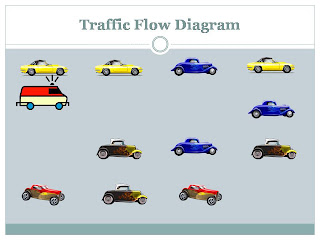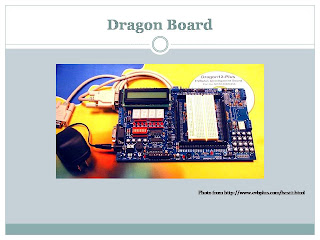(Previous topic: "Introduction" Posted on February 10, 2012)
All things, that are said to be matter, fill up (occupy) some space and have mass. Mass is the amount of atoms or molecules that matter is built from. Molecules are simply the joining or bonding of atoms. An understanding of the structure of atoms (atomic structure) and the ways they bond helps with understanding electricity; however, it isn’t necessary.
Atoms are made from three types of particles (subatomic particles). Only hydrogen atoms have two types. These subatomic particles are neutrons, protons, and electrons. Neutrons are not charged (neutral), protons have positive charges (+), and electrons have negative charges (-).
Atoms do not depend on neutrons to become charged. Atoms with equal number of electrons and protons are also neutral and don’t have an electrical charge. Atoms have negative charges (called negative ions) when there are more electrons than protons, and atoms have positive charges (called positive ions) when there are more protons than electrons.
Negative ions push away (repel) other negative ions. Electrons repel other electrons and negative ions. Electrons leave negative ions and atoms that don’t want some electrons. The electrons move toward (are attracted to) positive ions and towards atoms that want more electrons.
Electrons can travel through certain materials to bond with atoms that have positive charges. Electrons can easily flow through some materials, such as copper and iron. Materials that allow the flow of electrons are called conductors, and this flow (current) of electrons is called electricity. Materials such as plastic and wood, that don’t allow electrons to easily flow through them, are called insulators. Materials that permit the flow of electrons but slow down (resist) the electrical current are called resistors.
Positive ions also repel other positive ions; however, ions cannot move through hard (solid) materials.
(The next topic will be posted later.)
Please use the following links to navigate to two videos on this topic:
Friday, February 17, 2012
Wednesday, February 15, 2012
Sunday, February 12, 2012
Saturday, February 11, 2012
"Sun Chaser" - Light Orienting Device (LOD) Project
- Troy Sieusankar
- To turn a solar panel(s) towards a source of light; for example, the sun, a flashlight, etc. This device will be able to reposition itself as the direction of a light source changes.
- The first stage of development would be to create horizontal (on the x and z axes) rotational adjustment (clockwise/counterclockwise movement to be determined). The second stage would be to have tilt adjustment (on the y axis). The third stage would be to have a light intensity distinguishing circuit that focuses on a brighter light source; for example, distinguishing between a flashlight and the sun.
Benefits:
- This device will maximize voltage and current outputs, by orienting towards a light source.
- There will be no need for human input, since the LOD would be self adjusting towards the changing direction of a light source.
- Cost for parts and production will be minimized by implementing simple electronic components, by avoiding the use of more expensive and complex microprocessors or microcontrollers, and avoiding the need for any programming.
- This device will be cheaper to construct and less expensive to sell, than other light orienting devices.
- Implement electronic light sensor(s) to detect light. (This is a power saver circuit that will turn off the system whenever light isn’t present.)
- Build a platform that rotates by an electric motor(s).
- Implement electronic circuit that turns on a motor(s) that will rotate a platform towards a light source. (The solar panel will rest on the platform.)
- Build a solar panel mount that adjusts its angle of inclination by a motor(s), electromagnet(s), or weight adjustments. (Optional, due to time constraints.)
- Implement electronic circuit that will tilt the angle of inclination of the solar panel for more intense light exposure. (Optional, due to time constraints.)
- Implement electronic circuit that will be able to distinguish the brighter, more intense, of two (or more) light sources. (Optional, due to time constraints.)
- http://www.radioshackdiy.com/project-gallery/light-seekingorienting-device
- http://www.youtube.com/watch?v=_WbWUffjAGc&feature=share
- http://www.youtube.com/watch?v=dBYfNexDmKM
Friday, February 10, 2012
Introduction
Welcome to "Circuit Construction Steps for Beginners." My name is Troy Sieusankar. I have developed this portal to introduce newcomers to the field of electricity and electronics. This online guide will begin with a list of required material and parts, and with the basic explanation on the operation of a simple circuit. This guide will take you step by step through the construction of the simple circuit. More advanced types of circuit construction techniques, components, and processors, will be explained at the end.
Parents and fellow teachers please feel free to comment on any discrepancy that you discover. All comments are welcome, no matter the topic or concern. Give your input and suggestions as you see appropriate. Electricity is dangerous and there has been accidents in the past, some students were hurt while experimenting with circuit construction.
CAUTION!
Electricity should always be respected. There is always the risk of being shocked or electrocuted, by making physical contact with conductors of an electric circuit, and the risk of being burnt, by creating short-circuits. Parents should supervise all young children as they attempt the step-by-step procedures or start experimenting with electricity. More details about safety will be given as this guide progresses, and all precautionary measures should be obeyed.
Note to parents:
This guide introduces my students to topics that are important in understanding electricity and circuits. Participation in the step-by-step procedures will be supervised by me during class, and all parents should supervise all circuit construction activities during off school hours. At the completion of this guide: my students should feel comfortable with discussing topics on electricity, be able to design their own simple circuits, and have the foundation for advancing onto more advanced circuit construction.
Please go to the topic: "Circuit Basics: Charges and Electricity."
Parents and fellow teachers please feel free to comment on any discrepancy that you discover. All comments are welcome, no matter the topic or concern. Give your input and suggestions as you see appropriate. Electricity is dangerous and there has been accidents in the past, some students were hurt while experimenting with circuit construction.
CAUTION!
Electricity should always be respected. There is always the risk of being shocked or electrocuted, by making physical contact with conductors of an electric circuit, and the risk of being burnt, by creating short-circuits. Parents should supervise all young children as they attempt the step-by-step procedures or start experimenting with electricity. More details about safety will be given as this guide progresses, and all precautionary measures should be obeyed.
Note to parents:
This guide introduces my students to topics that are important in understanding electricity and circuits. Participation in the step-by-step procedures will be supervised by me during class, and all parents should supervise all circuit construction activities during off school hours. At the completion of this guide: my students should feel comfortable with discussing topics on electricity, be able to design their own simple circuits, and have the foundation for advancing onto more advanced circuit construction.
Subscribe to:
Comments (Atom)



















